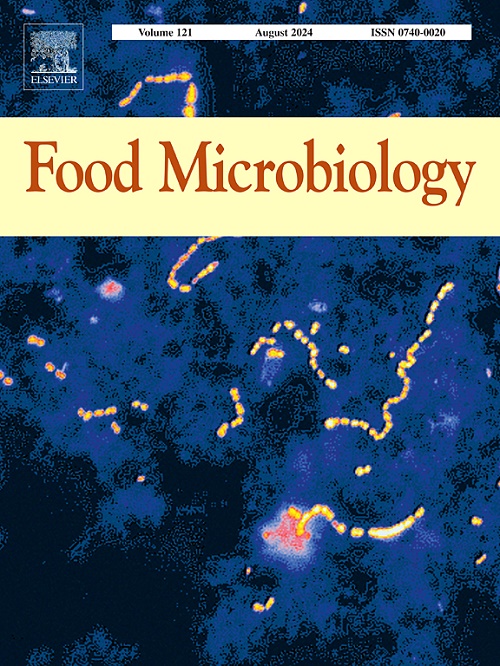Investigating the role of primary fungi in Huangjiu fermentation: Insights from flavor orientation and synthetic microbiomes
IF 4.5
1区 农林科学
Q1 BIOTECHNOLOGY & APPLIED MICROBIOLOGY
引用次数: 0
Abstract
Huangjiu, a traditional alcoholic beverage, presents a complex fermentation ecosystem primarily influenced by specific fungal species. This study utilized a culture-dependent approach and amplicon sequencing to explore fungal community succession during Huangjiu fermentation. Key fungi identified include Saccharomyces cerevisiae, Aspergillus species (flavus, oryzae, niger), Saccharomycopsis fibuligera, Thermomyces lanuginosus, Rhizopus arrhizus, Issatchenkia orientalis, Wickerhamomyces anomalus, and Diutina rugosa. Employing a synthetic microbiome, we developed a dual-strain fermentation system to evaluate the impact of these fungi on Huangjiu's organoleptic properties. Introduction of these fungi significantly altered the flavor profile, enhancing 23 volatile organic compounds (VOCs), with S. fibuligera notably increasing nine distinct VOCs. While molds contributed to bitterness by increasing bitter amino acids, S. fibuligera effectively mitigated these components, enhancing the beverage's alcohol body, smoothness, and balance. These findings provide crucial insights for optimizing Huangjiu fermentation to improve its quality and appeal.

研究原生真菌在黄酒发酵中的作用:来自风味取向和合成微生物组的见解
黄酒是一种传统的酒精饮料,其发酵生态系统复杂,主要受特定真菌种类的影响。本研究利用培养依赖法和扩增子测序法对黄酒发酵过程中的真菌群落演替进行了研究。鉴定出的主要真菌包括酿酒酵母菌、曲霉种(黄曲霉、米曲霉、黑曲霉)、纤维酵母菌、热霉菌、arrhizopus、Issatchenkia orientalis、Wickerhamomyces anomalus和Diutina rugosa。采用合成微生物组,我们开发了一个双菌株发酵系统,以评估这些真菌对黄酒感官特性的影响。这些真菌的引入显著改变了风味特征,增加了23种挥发性有机化合物(VOCs),其中S. fibuligera显著增加了9种不同的VOCs。虽然霉菌通过增加苦味氨基酸来增加苦味,但纤维酵母有效地减轻了这些成分,增强了饮料的酒体、顺滑性和平衡性。这些发现为优化黄酒发酵以提高其质量和吸引力提供了重要的见解。
本文章由计算机程序翻译,如有差异,请以英文原文为准。
求助全文
约1分钟内获得全文
求助全文
来源期刊

Food microbiology
工程技术-生物工程与应用微生物
CiteScore
11.30
自引率
3.80%
发文量
179
审稿时长
44 days
期刊介绍:
Food Microbiology publishes original research articles, short communications, review papers, letters, news items and book reviews dealing with all aspects of the microbiology of foods. The editors aim to publish manuscripts of the highest quality which are both relevant and applicable to the broad field covered by the journal. Studies must be novel, have a clear connection to food microbiology, and be of general interest to the international community of food microbiologists. The editors make every effort to ensure rapid and fair reviews, resulting in timely publication of accepted manuscripts.
 求助内容:
求助内容: 应助结果提醒方式:
应助结果提醒方式:


